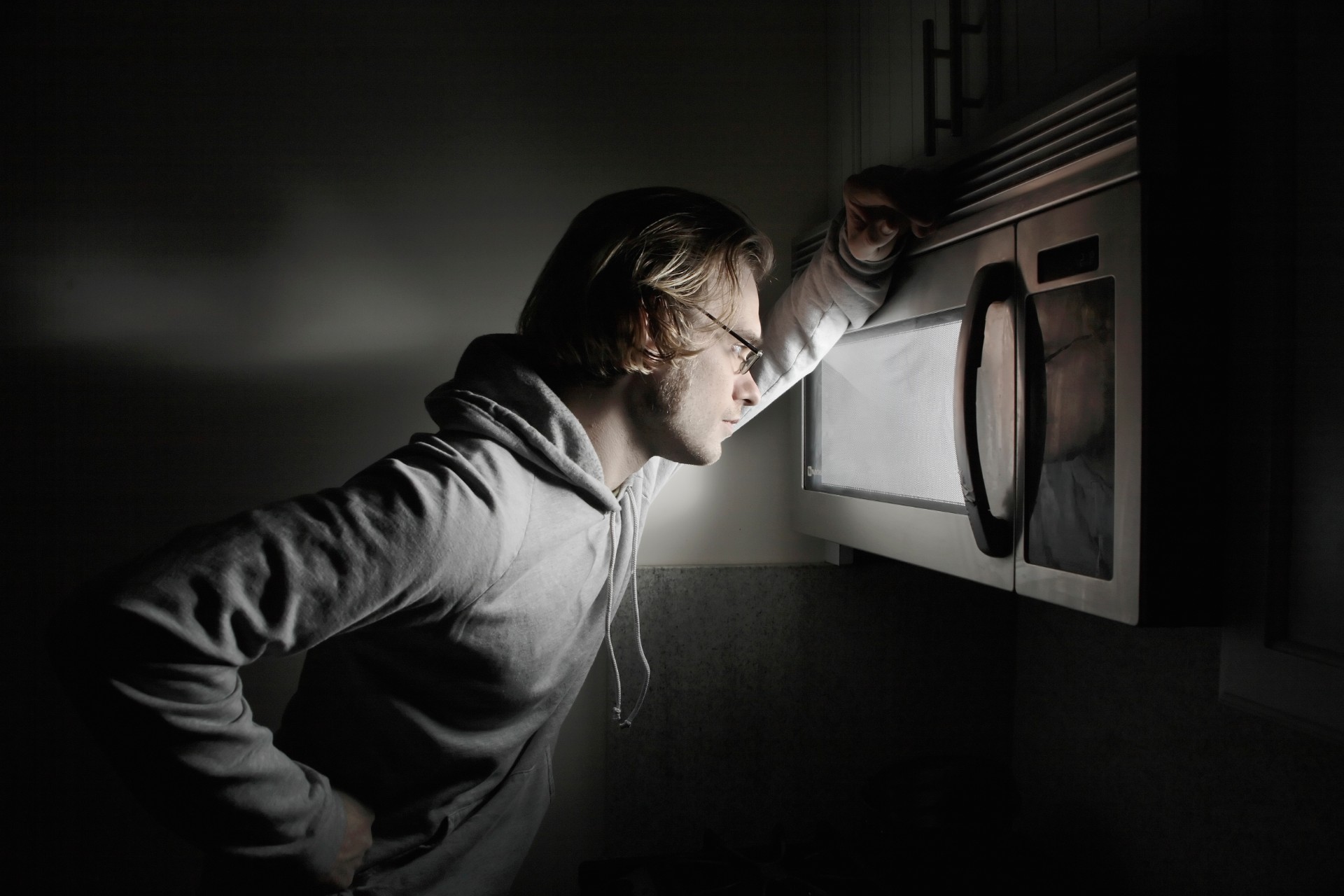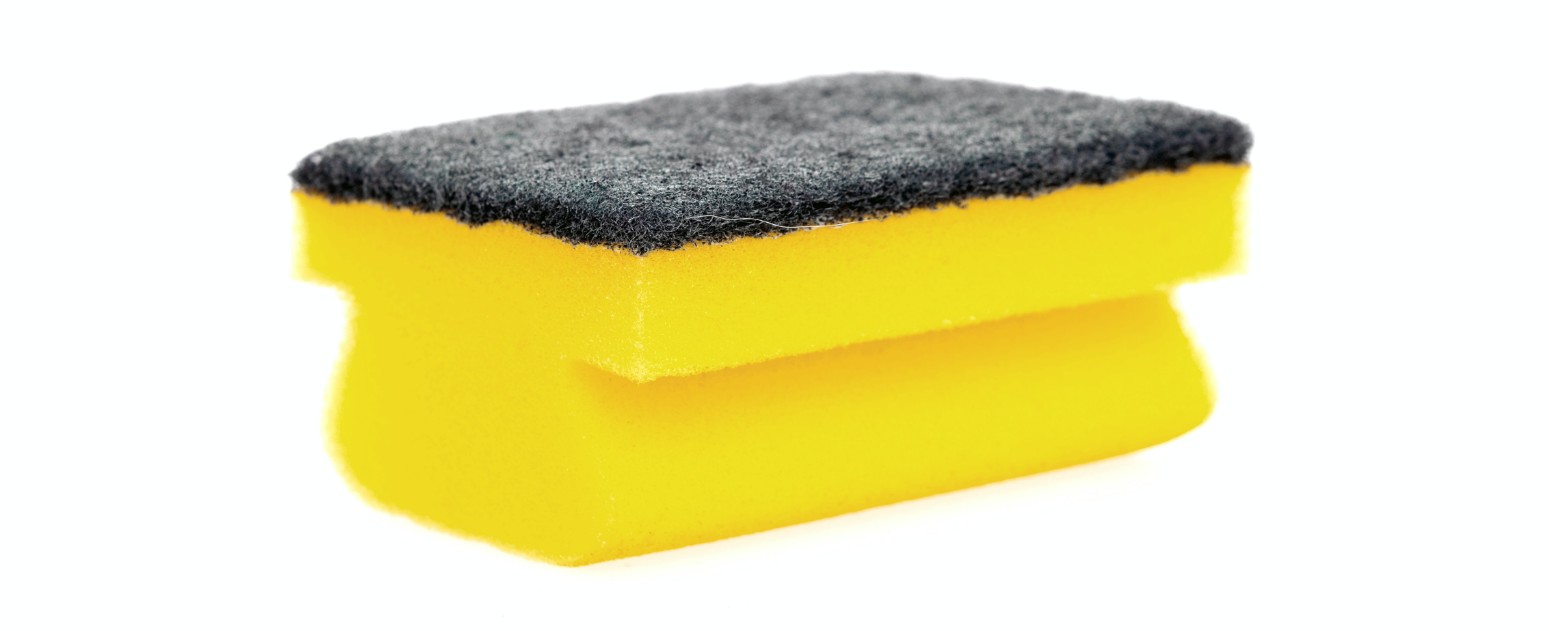
Sponges are a useful and common tool in every kitchen. They come in different styles, sizes, and shapes to best suit your cleaning needs. The one downside to sponges is that, at some point, they need to be replaced. How long they last is up for debate. One tip you may have heard is that microwaving a sponge will kill the germs on it, making it last longer. If this home tip really does work, it can help you save money on sponges, reduce the spread of germs to your dishes, and improve your overall dish-cleaning experience. But does the microwave kill bacteria on your sponge?

Pros of microwaving a sponge
Your microwave is a powerful piece of equipment. It can heat up food in seconds, defrost frozen meats in minutes, and boil water quicker than any pot. So why couldn’t a tool with such power rid a sponge from some germs? The good news: it can. And actually, there are many great advantages to microwaving your old, used sponge beyond just clearing it of germs.
- Sterilizes sponges. Instead of tossing out your old sponge, microwave it. Multiple studies have shown that microwaving your sponge for at least 2 minutes on full power can rid 99% of bacteria and living germs, and this is confirmed by to WebMD. It can even kill illness-causing bacteria like E. Coli. The longer you microwave your sponge, the more bacteria and germs it will kill. Typically, 4 minutes is the most you should need to sterilize one sponge.
- Saves you money. The more sponges you can sterilize, the more money you can save. If you tend to use your sponges often, then you may go through them quickly. Cleaning kitchen surfaces that had raw meat on them typically render your sponges useless. Luckily, a quick run in the microwave will kill all bacteria, making it safe to use again and again.
- Saves you time. Finding out you need a sponge but don’t have any more can be frustrating. Instead of running to the grocery store to buy more, you can utilize your dirty one by microwaving it. It’ll save you time and frustration for those last-minute uses.

Cons of microwaving a sponge
Even though we have said that microwaving a sponge kills bacteria and germs, there can still be negatives associated with it. It is important to be aware of any disadvantages before you decide to go this route.
- Metal sponges or metal-laced sponges are a no-go. If you love metal or metal-laced sponges, you know they are ideal for getting those hard, stuck-on messes off your pots and pans. Unfortunately, however, there is no way to microwave them. Metal in a microwave is a strict no. It can cause fire or explosions in your kitchen. So, if you love using these types of sponges, then unfortunately, this hack isn’t beneficial for you.
- There is a waiting period before using the sponge again. As you know, the microwave makes things very, very hot. The same goes for your sponge. It is important to let your sponge cool down before use, which can take around 10-20 minutes. This may be a small inconvenience if you need to use the sponge immediately.
- Smells may be unpleasant. The microwave kills all of the germs and bacteria, which is great. But, unfortunately, this method can often leave you with a smelly microwave. You are essentially cooking and killing the bacteria while also cooking any food particles still attached to your sponge. The nasty cooking smell can sometimes linger in your kitchen, making this life hack a deal breaker for some people.

Other methods for sterilizing your kitchen sponge
If you’re not okay with the pitfalls of microwaving your sponge, there are a few other effective cleaning hacks for killing that bacteria and prolonging the life of your kitchen sponge. One common approach is to soak the sponge in a bleach solution. Mix one part bleach with nine parts water, and immerse the sponge for about five minutes. Rinse thoroughly afterward.
Another option is to run the sponge through the dishwasher along with your regular load of dishes. The high water temperature and detergent will help disinfect it.
For a natural solution, you can employ the tried-and-true, chemical-free method of boiling the sponge in a pot of water for at least five minutes. This will kill most bacteria, but be cautious not to burn or damage the sponge in the process. Regularly disinfecting your sponge is essential for maintaining a clean and safe kitchen.

How long should you keep a sponge in general?
Even though microwaving a sponge does sterilize it and kill germs and bacteria, you still shouldn’t keep it forever. A sponge is meant to be replaced at some point, even if that replacement period is prolonged. How long you keep your sponge is fully dependent on use. If you use your sponge every day, you should keep it for only about a week if you never sterilize it. If you do sterilize your sponge regularly, it can typically last for two to three weeks. This is because your sponge will still lose its scrubbing power over time, regardless of how clean it is.
Based on a study conducted by Markus Egert, a microbiologist at the University of Furtwangen in Germany, reported by the Seattle Times, it’s best to toss the sponge after a week, as bacteria can still dwell in your cleaning tool (even after microwaving). Regardless of whether you follow this life hack or not, it is important to maintain a clean sponge and replace it regularly to prevent the spread of germs and bacteria.
As you can see, there are many pros and cons to microwaving your kitchen sponge. The whole purpose of washing your dishes is to keep things clean and healthy. Scrubbing your dishes with a bacteria-filled sponge defeats that purpose entirely. Overall, microwaving your sponge regularly will keep it sterilized, clean to use, and prolong its life. But, it is important to replace your sponge even with regular sterilization.



